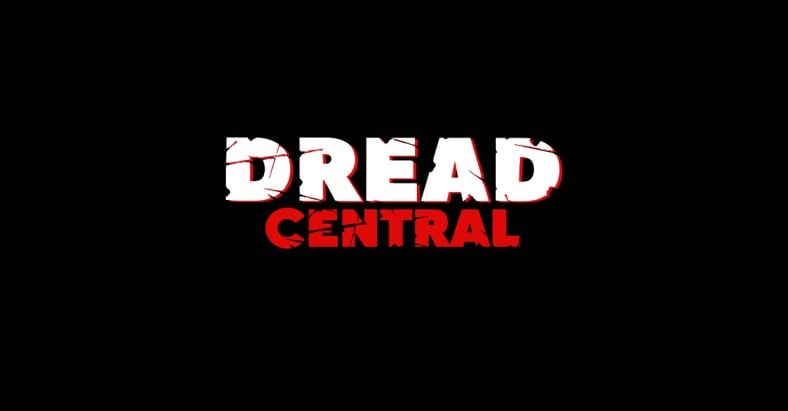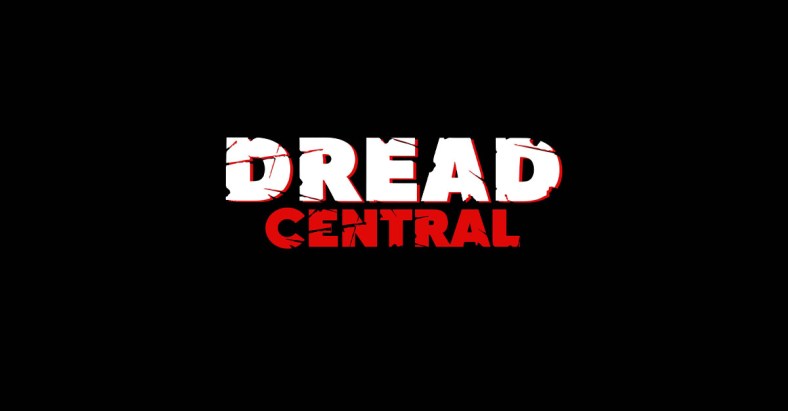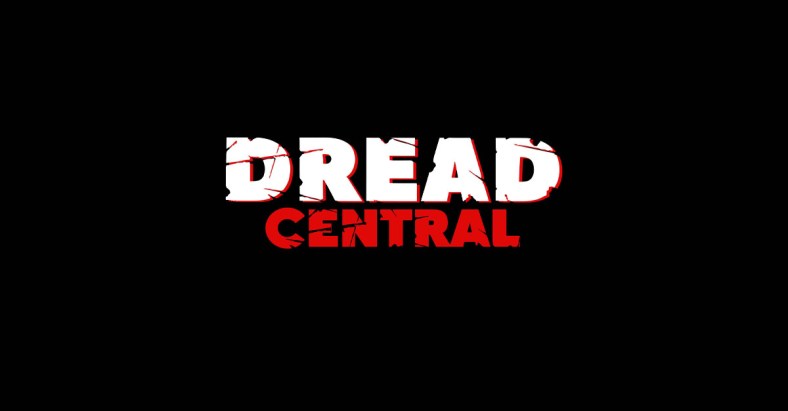The Sinking City: Concept Artist Andrey Roscha on Designing Beautiful Terror

Last week, we interviewed Sergey Ten, the narrative lead on Frogwares’ upcoming open-world game The Sinking City. Today, we’re continuing our dive into the creation of the open-world horror game by interviewing concept artist Andrey Roscha, whose dark and horrific designs breathe life into the world of Oakmont, Massachusetts, the setting of the game.
In this interview, Roscha goes into the inspirations that drove him, how working with a team impacts the designs he creates, what it’s like to see his art come to life, and more. You can read all that, and more, below!
Make sure to follow our coverage of The Sinking City.
Dread Central: The Sinking City makes no attempts to hide its H.P. Lovecraft influence. What elements of his work did you pull from and use as the foundation for your work?
Andrey Roscha: In our work, we are using almost every theme Lovecraft explored in his books: hopelessness, desperation, fatalism, decay, corruption of mankind etc. Also the fact that man is mortal and that we all will die one day, and that our actions do not really matter on a global level. We are trying to convey these feelings in our artworks.
If you think that’s not an easy task – to transform philosophy into palpable objects – you are both right and wrong. Lovecraft was very vague in his descriptions of many things, which is, actually, a very good thing for us. We have a lot of freedom in designing our world, our characters and our monsters. This is basically our own interpretation of what characters should look like in the Lovecraft universe. And when I say our own, I mean that it’s by people who know his works pretty damn well, both because we are fans and because we’ve done a whole lot of research on them.
DC: One of Lovecraft’s themes is the mutation and experimentation of the human form. We’ve seen in movies like The Thing or Invasion of the Body Snatchers that “humans who aren’t quite human” is a terrifying concept. Is that something you’ve utilized while creating the concept art?
AR: Yes! And we used that idea for several reasons. It’s a beautiful concept really, and it comes from Japan. When we see things that appear almost human to our eye but move or act slightly different or strange, we will likely feel very weird or scared. Do you remember enemies in Silent Hill, for example? Nurses in the hospital – look like humans, but with their bobbing heads and twitchy movement, they are quite… unsettling.
In our game, we do use this approach to a degree, we do give certain humanoid features to some of our monsters, but we also have others that are quite different – both in terms of how they look and how they move.
And frankly, it’s very cumbersome to create animations for very… complicated monsters, very costly resource wise. Sometimes it’s better to just ask people to do these strange moves during motion capture sessions and use their animations while creating a monster. Not only it’s easier and faster, but I feel the result is much more intriguing. We can do so much interesting stuff with that and make our creatures truly unique and suspenseful. And as a side note, that’s also the reason why so many games feature human-like monsters. Just a little insider tip.

DC: As a concept artist, you’re essentially the first in line to create what the world will actually look like. Obviously that’s a difficult task but it’s also a place of wonderful creative freedom. What were some of the inspirations you had when beginning your work?
AR: Aside from Lovecraft himself, you mean? I’d say books, movies and video games are my main sources of inspiration… and a lot of alcohol. Also, real life. I can take a trip to the forest to feel the atmosphere of loneliness, or go to the mountains.
I also like to read Stephen King, who he himself has admitted to drawing inspiration from Lovecraft’s works. I read a lot of books in general and watch a lot of science fiction or horror movies. Sometimes you can find things in very different media that perfectly fit into a Lovecraft-inspired game.
DC: Coming off of that question, you’re still beholden to the boundaries and framework of the game and its aesthetics. How did working with the rest of The Sinking City team influence and impact your artwork?
AR: That’s a very good question. The work of a concept artist does not exist in a vacuum – we interact with other teams in our company very, very tightly. We are team players by nature because we are the link between narration and 3D artists. Or narration and the guys from cinematics. Or narration and the combat team.
So I naturally talk to a lot of different teams. For example, I’m a part of the combat unit – a mix of specialists from different departments who work on, well, combat. We talk a lot about what kind of enemies we should have, how they should behave and so on. Based on these discussions, I draw my concept pieces.
Also, there are technical limitations that impact our work. For example, when we draw our characters, we need to consider their clothes – how long the trench coat is, the size of their pants etc. Because our 2D concepts will be made into full-blown 3D models, which, in turn, will need to be animated properly. So to avoid weird collisions – like when a character’s hands go through his jacket – certain decisions need to be made at the stage of doing a concept piece.
I like to think of our company as a galley, and we are the people who do the rowing. It’s a team work and it’s up to everyone to keep the same pace.
DC: We’ve seen images of the statues that are around the office that help set a mood for working on the game. What mediums did you work with while designing the art?
AR: We used to have these Friday team building sessions, when we would come to the office but were free to do anything we’d like. So we played Lovecraftian tabletop RPGs or video games, inspired by Lovecraft, even though there weren’t a lot of them at the time. And, we also played games that we thought we could learn a lot from – in terms of narration, atmosphere, emotions etc. To give you an example, The Last Of Us was one of them.
So when a cool new game was released, somebody from our office would be playing it, with the others watching. Then we would discuss what we liked, what we didn’t, what we thought we could implement in our game.
DC: A city like Oakmont, at least from what I can see, is a place where nothing is really as it seems. What kind of atmosphere did you want to create with your designs?
AR: Remember how I mentioned hopelessness, desolation and decay? That’s exactly what we are aiming for. You know, it wasn’t easy finding the right atmosphere, the right mood for our game. We had experimented a lot, looking for this sweet spot between the American Roaring Twenties and that Lovecraftian state decay.
Our game is about how insignificant people are in the universe. So when we work on concept arts of, say, flooded streets, we want to show that. We want to show that whatever people created can be easily destroyed in a heartbeat. If I had to describe the atmosphere in our game, I’d say it’s depression mixed with a bit of hangover.

DC: How does creating concept art for the inhabitants of Oakmont differ from creating Oakmont itself? Aside from the obvious that the former are living entities while the latter is a location, of course.
AR: Well, there’s a huge difference. Oakmont artworks are more about architecture and urbanism, while people are more about fashion. With regards to the city, we examined tons of different architectural styles, we have an architect in our office, we’ve had a few urban designers on the side, our people went to Massachusetts to have a look at their architecture.
All that to help us understand what a 1920s New England city should look like, what kind of people would live there and so on. Only after doing all that research could we start working on concept art.
When it comes to people, we obviously try to design them the way they would look in the 1920. However, this is where we had to think about being 100% authentic vs. making things that wouldn’t look ridiculous. What I mean is, sometimes how people dressed a hundred years ago could… look a tiny bit ridiculous today, like wearing a belt way above your waistline. So we are mixing this retro fashion with a touch of modern one. Just enough so that it you won’t make fun of the way people dressed in the 1920s.
DC: What is it like seeing your designs come to life within the game and to know that people who play the game will walk through the world that you helped create?
AR: I’m not sure about the others, but what I feel is…relief, and maybe a little bit of devastation? It’s like I did my job, thank me very much, now I’m free! Don’t forget, I have to push the galley forward, so when we reach our destination point, I feel relieved! Now I can take off my shoes, smoke a cigarette, and get drunk.
To keep up with The Sinking City, follow them on Twitter, Facebook, and Frogware’s official website.
Categorized:Horror Gaming News



